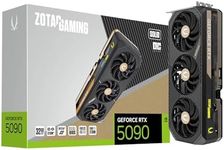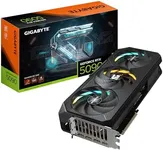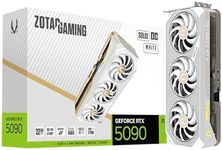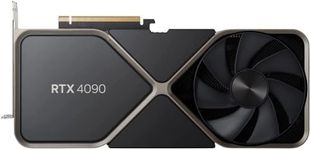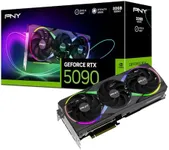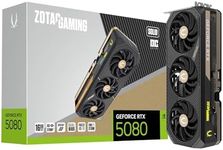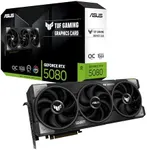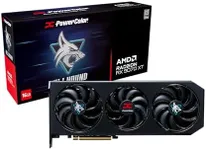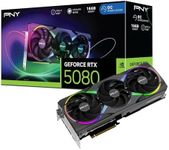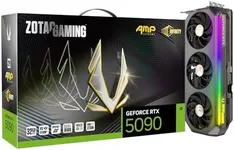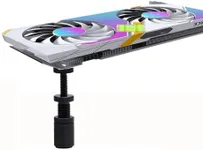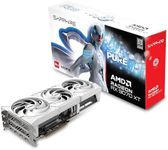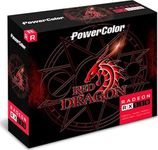Buying Guide for the Best Graphics Cards
Choosing the right graphics card can significantly enhance your computer's performance, especially for gaming, video editing, and other graphics-intensive tasks. The key is to understand your needs and match them with the specifications of the graphics card. Here are the main specs to consider when selecting a graphics card and how to navigate them.GPU (Graphics Processing Unit)The GPU is the heart of the graphics card, responsible for rendering images, videos, and animations. It's important because a more powerful GPU can handle more complex graphics and provide smoother performance. GPUs are often divided into entry-level, mid-range, and high-end categories. Entry-level GPUs are suitable for basic tasks and light gaming, mid-range GPUs are good for more demanding games and applications, and high-end GPUs are designed for the most intensive tasks, such as 4K gaming and professional video editing. Choose a GPU based on the intensity of the tasks you plan to perform.
VRAM (Video RAM)VRAM is the memory used by the GPU to store image data. It's crucial because more VRAM allows the graphics card to handle higher resolutions and more detailed textures. VRAM typically ranges from 2GB to 24GB or more. For general use and light gaming, 4GB to 6GB of VRAM is usually sufficient. For more demanding games and applications, 8GB to 12GB is recommended. For professional tasks like 3D rendering or 4K video editing, 16GB or more may be necessary. Consider the resolution and detail level of the tasks you will be performing to determine the right amount of VRAM.
Clock SpeedClock speed, measured in MHz, indicates how fast the GPU can process data. Higher clock speeds generally mean better performance. Clock speeds can be divided into base clock and boost clock. The base clock is the minimum speed the GPU runs at, while the boost clock is the maximum speed it can reach under load. For casual users, the base clock speed is usually sufficient to consider. For gamers and professionals, the boost clock speed is more relevant as it indicates the card's performance under heavy use. Choose a graphics card with a higher clock speed if you need faster processing for demanding tasks.
Cooling SystemThe cooling system is essential for maintaining the performance and longevity of the graphics card. It prevents the GPU from overheating during intensive tasks. There are different types of cooling systems, including air cooling, liquid cooling, and hybrid cooling. Air cooling is common and sufficient for most users, while liquid cooling provides better heat dissipation for high-end GPUs. Hybrid cooling combines both methods for optimal performance. If you plan to use the graphics card for extended periods or under heavy loads, consider a card with a more advanced cooling system to ensure stable performance.
Power ConsumptionPower consumption refers to the amount of power the graphics card requires to operate. It's important because higher power consumption can lead to higher electricity bills and may require a more powerful power supply unit (PSU). Graphics cards are rated by their TDP (Thermal Design Power), which indicates the maximum amount of heat they generate and, consequently, their power needs. Entry-level cards typically have lower TDPs (under 100W), mid-range cards range from 100W to 250W, and high-end cards can exceed 250W. Ensure your PSU can handle the power requirements of the graphics card you choose.
ConnectivityConnectivity options determine how the graphics card connects to your monitor and other devices. Common ports include HDMI, DisplayPort, and DVI. It's important to ensure the graphics card has the right ports for your monitor(s). HDMI and DisplayPort are the most common and support high resolutions and refresh rates. DVI is older but still useful for some setups. If you plan to use multiple monitors, check the number of ports and their types. Choose a graphics card with the appropriate connectivity options to match your display setup.
Form FactorThe form factor refers to the physical size and shape of the graphics card. It's important because it must fit inside your computer case. Graphics cards come in various sizes, including full-size, mid-size, and low-profile. Full-size cards are the largest and offer the best performance but require more space. Mid-size cards are a balance between size and performance, while low-profile cards are smaller and fit in compact cases but may have lower performance. Measure the available space in your case and choose a graphics card that fits comfortably.
